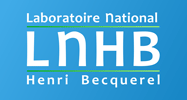Graphite and water calorimeters
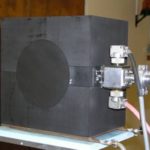
Calorimetry is the best technique for absolute and direct measurement of absorbed dose. It is based on the measurement of the temperature rise of a given volume element of this instrument when it is exposed to a source of radiation. The graphite and water calorimeters are used as the basis for references of absorbed dose in water which is the reference medium for radiotherapy. Indeed, water and graphite are close to biological tissues because of their composition or atomic number.
The LNE-LNHB has developed and constructed several models of these two types of instruments for reference measurements in different radiation fields (electrons, medium energy X-rays, high energy photons, neutrons and protons). This is for water absorbed dose rates greater than 0.5 Gy/min, such as those used in radiotherapy treatments.
Water calorimetry
The water calorimeter is designed to operate at 4 °C, at which temperature the density of the water is maximum, in order to minimize convection currents inside the volume of water used for measurements. The inside of the calorimeter consists of a radiotherapy water phantom of (30 × 30 × 35) cm3.
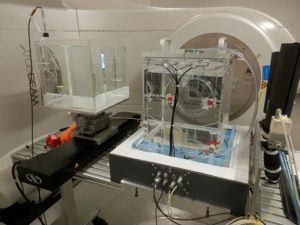
The temperature increase under irradiation is measured by two temperature probes whose sensors are thermistors whose resistance varies according to the temperature following a known law. These probes are placed inside a cylindrical quartz bulb filled with ultrapure water saturated with nitrogen. The saturation of the water with nitrogen results in practically no heat loss of the water, i. e. all the energy deposited in this volume of water by the radiation is converted into heat. Indeed, ionizing radiations are at the origin of the water radiolysis process which initiates a complex set of chemical reactions that can disturb the measurement.
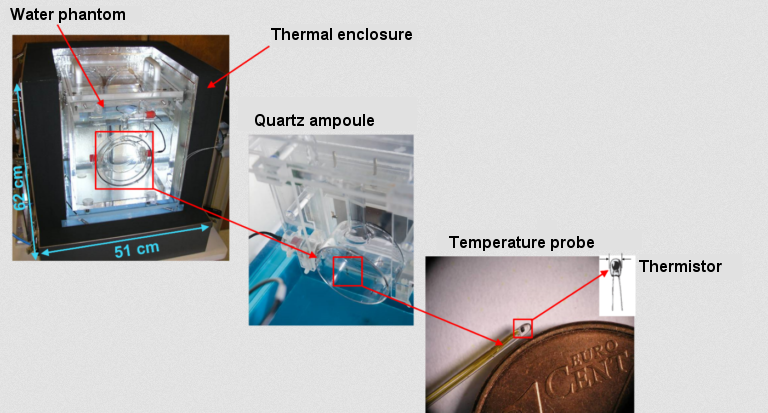
The temperature of the water phantom is regulated at 4 °C by a cold air circulation inside the thermal enclosure of the calorimeter. The absorbed dose in water is obtained directly from the product of the measured temperature rise and the specific heat capacity of the water. The relative standard uncertainty of the absorbed dose in water obtained by water calorimetry is between 0.5% and 1% depending on the radiation field.
Graphite calorimetry
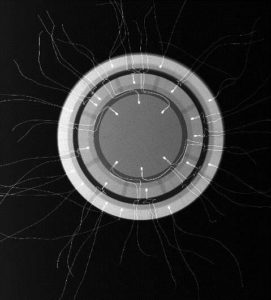
The graphite calorimeter is a solid calorimeter made up of several concentric bodies, usually three, (from the inside to the outside: core, jacket and shield), inserted in a block of the same reference material. The core is the sensitive part of the detector, where the radiation-induced temperature rise is determined. Its mass must be perfectly known, so as to deduce from the reported energy the value of the average dose absorbed in this element. Several graphite calorimeters have been built with cores from 6 mm to 30 mm in diameter.
The different bodies of this set-up are suspended so as not to have direct contact with each other, and placed in a vacuum enclosure to insulate them thermally.
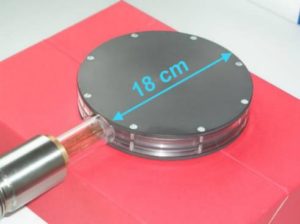
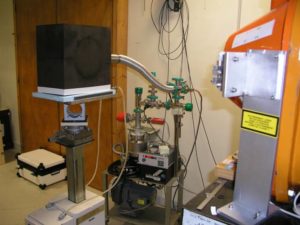 The temperature rise is measured with thermistors which are inserted in each of the calorimeter components. These thermistors have two uses: some are for temperature measurement, the others for Joule heat input to regulate the temperature of the calorimeter and perform its electrical calibration. In practice, with the electrical calibration by dissipation of a known amount of heat to the heating thermistors by means of the Joule effect and by measuring the corresponding reading of the instrument, the heat capacity of the graphite core doesn’t need to be known. This electrical calibration coefficient is then used to determine the absorbed dose in the graphite when the instrument is irradiated.
The temperature rise is measured with thermistors which are inserted in each of the calorimeter components. These thermistors have two uses: some are for temperature measurement, the others for Joule heat input to regulate the temperature of the calorimeter and perform its electrical calibration. In practice, with the electrical calibration by dissipation of a known amount of heat to the heating thermistors by means of the Joule effect and by measuring the corresponding reading of the instrument, the heat capacity of the graphite core doesn’t need to be known. This electrical calibration coefficient is then used to determine the absorbed dose in the graphite when the instrument is irradiated.
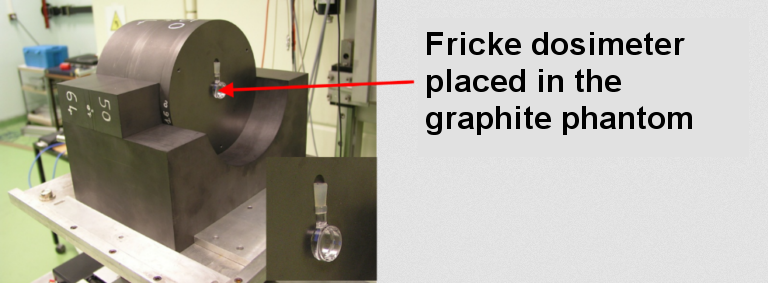
A graphite-water transfer is necessary to obtain the absorbed dose in water from the dose in graphite. It can be done by Fricke chemical dosimetry or Monte Carlo calculations. The relative standard uncertainty of the absorbed dose in water obtained by graphite calorimetry after graphite-water transfer is between 0.3% and 0.4% depending on the radiation field.
Our job: metrology
dosimetry
Implemented methods for the establishment of national references must be adapted to the radiation type and its intensity. They are based on measurement technics such as calorimetry, ionometry and chemical dosimetry.
Radioactivity
The variety of the emitted radiation and physical forms of the sources oblige to adapt the measurement process in order to establish national references: methods with defined geometries, or 4 π countings geometries, coincidence countings, etc.
